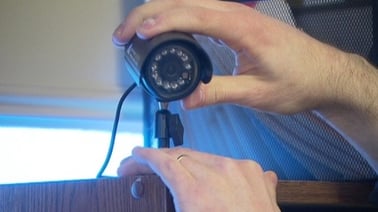Reality Alert: A member at a local community organization presents a manager with medical bills, demanding the organization pay them. The member claims to have slipped and fallen in their lobby and is seriously injured, as evidenced by their large stack of medical bills. Luckily, the facility entrance is monitored by video cameras. The organization is able to review the video from the date the member claims the fall occurred. It shows the person actually didn't fall and the organization is able to deny the claim.
Benefits and Drawbacks of Video Monitoring

Video monitoring can be instrumental in keeping a facility safe. There are many reasons why facilities invest in a surveillance system, including:
- Preventing employee theft;
- Deterring people from committing thefts/assaults at the facility;
- Avoiding frivolous claims/lawsuits like the story above;
- Helping with incident investigations;
- Using videos as a staff training tool; and
- Creating a legal record of any crimes or harassment that occurs on the premises.
There are also a few drawbacks to consider before investing in this technology:
- The systems can be expensive to install and maintain, and the facility may incur additional expenses to store video recordings.
- The cameras could be vandalized/stolen.
- Privacy issues may arise so organizations should consult their local and state regulations regarding privacy, recording sound as well as images, and never install cameras in bathrooms/locker rooms.
Facility Monitoring Best Practices
- Place cameras in strategic areas: Entrances and exits are good places to start. Other strategic locations include any areas of the facility not monitored by staff members at all times, such as a 24-hour fitness area. Other high-risk areas, like the front desk and pool area, are good to capture on camera.
- Save recordings for at least 30 days before taping over: If an incident occurs that could possibly become an issue, the organization should immediately save the tapes from that day to preserve any evidence that might be needed. Having cameras but not preserving footage of an incident can really hurt a facility in the event of a claim or lawsuit.
- Don't use video monitoring as a substitute for staff monitoring of the facility: Staff members should continue to regularly monitor the facility, especially locker rooms and restrooms, to stay on top of any issues that could come up.




